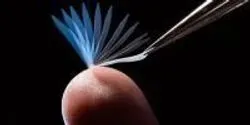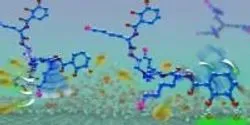chemical engineering

Kyle Lampe, an assistant professor of chemical engineering in the University of Virginia’s School of Engineering and Applied Science, is growing cells in three-dimensional hydrogels, an environment closer than petri dishes to how cells grow on their own. He can control the hydrogel’s softness or stiffness, and by raising the cells in a three-dimensional solution, the cells react more closely to how they would in nature

Bacteria are a pervasive and elusive bunch. Scientists estimate that between 10 million and 1 billion different microbial species populate the world, yet only a handful of them have so far been identified. Why? Because the overwhelming majority of microbes refuse to grow in the laboratory. This is despite decades of scientists’ best efforts at coaxing the microscopic organisms into action.

A group of McMaster University researchers has solved the problem of cumbersome, expensive and painfully slow water-testing by turning the process upside-down.

Lars Grabow has been given a $750,000 grant to solve a multi-billion dollar problem.

Iowa State University researchers think developing nanovaccines using a “systems” approach can revolutionize the prevention and treatment of diseases.














